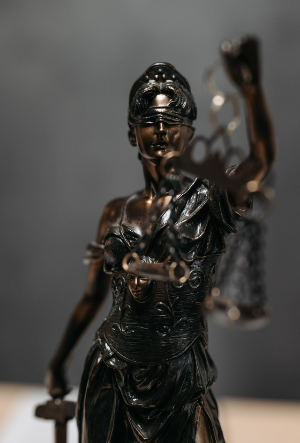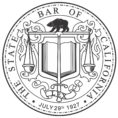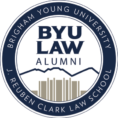Understanding California's Liability Laws: What You Need to Know After an Injury
 When accidents happen to occur, from car accidents to the tragic loss of wrongful death, the aftermath is painful. Families are often left alone to cope with serious injuries, financial losses, emotional suffering, and more.
When accidents happen to occur, from car accidents to the tragic loss of wrongful death, the aftermath is painful. Families are often left alone to cope with serious injuries, financial losses, emotional suffering, and more.
Were you involved in a car accident or experienced medical malpractice? Has your family sadly suffered the wrongful death of a loved one? If so, you may be wondering how to protect your rights and better understand your legal options.
One way to protect your rights is by learning about California’s liability laws. Additionally, you should consult experienced personal injury attorneys. These two steps can help you increase the chances of getting a fair settlement.
California’s Pure Comparative Fault Rule May Affect the Compensation You Get
In personal injury cases, such as car accidents or wrongful death, many states follow a system known as “fault-based” liability. This means that the party at fault for causing the accident or injury is typically responsible for covering the resulting losses.
In California, personal injury cases are decided on by pure comparative negligence laws. This means that if someone is hurt in an accident and shares some blame for the incident, he or she can still pursue compensation. However, the amount awarded in the personal injury case is adjusted based on the degree of fault.
For instance, consider a car accident where both drivers contributed to the crash. Even if one driver is found to be 90 percent responsible, he or she can still seek legal compensation. Still, any compensation awarded would be adjusted to account for that person’s share of 10 percent liability for the accident.
These personal injury laws apply to various types of accidents, such as:
- Work-related injuries
- Medical malpractice claims
- Auto accidents
- Fall accidents
- Premises liability
- Property damage
How Negligence Plays a Part in an Accident
What is negligence under California’s pure comparative fault laws? Negligence refers to the failure of a person or entity to exercise reasonable care. This neglect results in harm or injury to another person.
The court will carefully consider any personal injury negligence claims to determine the causes of your damages and losses.
In order to show negligence, the following elements must be proven.
Duty of care
It must be shown that the defendant owed a duty of care to you. This means there was a legal obligation for the defendant to act reasonably to protect you from harm. You must show that the defendant breached this duty by acting negligently or otherwise failing to take proper precautions.
Breach of duty
Next, you must show that this breach of duty directly caused the injuries sustained by the plaintiff.
You must prove that the defendant failed to meet the standard of care any reasonable person could expect under similar circumstances.
Causation
For a successful claim, you must prove causation. Proving this involves showing a clear link between the defendant’s breach of duty and the plaintiff’s injuries or damages.
You must also prove any damages and expenses that you suffered as a result of the defendant’s actions or negligence.
Damages for negligence can include, but are not limited to, the following:
- Medical expenses
- Lost wages
- Pain and suffering
About Strict Liability and California’s Comparative Fault Laws
In certain personal injury cases, the concept of strict liability comes into play. Unlike negligence, where the plaintiff must prove the defendant’s fault or neglect, strict liability imposes responsibility on the defendant regardless of their level of fault.
Product liability
Strict liability is commonly applied in product liability cases. If consumers are injured by a defective product, they may hold the manufacturer or distributor responsible. The key element is that the product was unreasonably dangerous and caused harm when used as intended.
Dog bites
Another area where strict liability may apply is in dog bite cases. In California, dog owners are held strictly liable if their dog bites someone. This is regardless of whether or not the owner knew about the dog’s aggressive tendencies.
Intentional Torts Are Their Own Category
Intentional torts are a specific category of liability in California. They involve actions that are done with the intent to cause harm or injury to another person. Unlike negligence cases, intentional torts require proof of intent.
What is an intentional tort?
One common example of an intentional tort is assault and battery. This occurs when one person intentionally causes physical harm or makes someone fear immediate harm.
Another example is the intentional infliction of emotional distress. This involves extreme and outrageous behavior intended to cause severe emotional distress.
In addition to these examples, intentional torts can also involve:
- Trespassing on someone else’s property without permission
- Defamation (making false statements about someone that harm their reputation)
- Fraud or misrepresentation leading to financial loss
- False imprisonment
- Harassment or bullying
The challenge of proving liability in intentional tort cases
Proving an intentional tort case can be complex. It is often difficult to prove a defendant’s intent behind their actions.
Defenses against intentional tort claims often include:
- Self-defense if physical force was used against an aggressor threatening your safety
- Consent if both parties had willingly agreed to participate in a potentially harmful activity
- Privilege if there is a recognized legal justification for the defendant’s actions
- Necessity if it was a necessary action taken due to emergency circumstances
If successful, plaintiffs may recover compensatory damages for any injuries suffered. They may even receive punitive damages meant to punish the defendant.
How to Prove Liability Under California’s Medical Malpractice Laws
Medical malpractice occurs when a healthcare professional or facility fails to properly care for a patient. This often results in harm or injury to a patient.
Plaintiffs must gather all relevant evidence and documentation related to their case. This may include medical records, expert testimony, and any other supporting documents that can help prove your claim.
California has enacted laws known as the Medical Injury Compensation Reform Act (MICRA), which places certain limits on damages awarded in medical malpractice cases.
Currently, in our state, non-economic damages are limited to $350,000 if a patient did not die. However, if a patient has died, it may be $500,000 or more. Proving liability is essential for malpractice victims to receive the compensation they deserve.
How California’s Comparative Fault Laws Apply to Car Accident Cases
How do California’s pure comparative negligence laws apply to car accident cases? What if both parties involved share some degree of responsibility for the accident? Under California law, even if you are partly at fault for a car accident, you may still be entitled to seek compensation from the other party.
However, your settlement or damages award will be reduced by your percentage of fault. For example, suppose you were found to be 20 percent responsible for the accident. Additionally, you suffered $100,000 in damages. In that case, your total recovery would be reduced by $20,000.
But what if it can be proven that one party acted intentionally or committed gross negligence? Then he or she may be unable to recover any compensation.
The Differences of California’s Wrongful Death Laws
When a loved one loses his or her life, it can be an overwhelming and devastating experience for the surviving family members. California’s wrongful death laws are designed to provide justice and compensation for a victim’s family.
In California, a wrongful death claim can be brought by certain qualifying family members, such as:
- Spouses
- Children
- Parents of the deceased individual
Wrongful death claims seek to hold the responsible party accountable for their actions. They also help to support the victim’s family financially.
How is it determined who is responsible for a wrongful death? California follows a pure comparative fault system in all personal injury cases. These include wrongful death claims.
Under this system, the court will evaluate each party’s involvement in and responsibility for the victim’s death. It may also issue a settlement for damages and losses the victim’s family has accrued. But how is the amount decided?
Allocation of Fault in Wrongful Death Liability Claims
California’s approach recognizes that life is complicated, and accidents can involve multiple factors. The law allows for a fair examination of each party’s contribution to an incident. This ensures that even if the deceased person shared some of the liability, his or her surviving family could still pursue compensation.
The court will decide based on the percentage of fault for each party involved in the accident.
This legal perspective balances accountability while providing a means for surviving family members to receive the support they may need in the aftermath of wrongful death.
How to Calculate Damages in a Wrongful Death Case
In California’s wrongful death cases, the calculation of damages involves a thorough evaluation by the court.
The court aims to provide a comprehensive and fair assessment of the impact the wrongful death has had on the surviving family. To do so, the court considers both economic and non-economic damages, such as the following.
Financial losses
Financial losses include monetary losses such as medical expenses. Along with medical bills, it also encompasses funeral costs and any other financial burdens directly related to the wrongful death.
Lost wages
If the deceased person was the family provider, the court may consider the financial support the family has lost due to the death. This involves estimating future earnings that the deceased would have provided to the household.
Pain and suffering
The court recognizes the emotional toll on the surviving family members. It may choose to award them damages for the pain and suffering endured due to the loss of their loved one.
Loss of companionship
Family members may be compensated for loss of consortium. This accounts for the guidance, companionship, and emotional support the deceased could provide.
In some cases, families may be able to seek punitive damages. These may be awarded to punish the at-fault party for egregious conduct and deter similar behavior.
What Reduces Damages in Wrongful Death Settlements
The deceased’s percentage of fault will reduce the total damages awarded to the surviving family members. California’s pure comparative fault system allows for recovery even if the person was more than 50 percent at fault.
For example, suppose the total damages are $1 million. If the deceased person was unfortunately found to be 30 percent at fault, the damages recoverable by the surviving family members would be reduced to $700,000 ($1 million minus 30 percent).
Losing someone you love due to negligence or wrongdoing can have a long-lasting emotional and financial impact on your life. Seeking justice through a wrongful death claim, though, can provide the closure and fair compensation your family needs.
How to Prove Liability in Wrongful Death Cases
Regarding wrongful death cases, plaintiffs should be aware of the common defenses that defendants might use. These defenses aim to deny or reduce liability for the death and damages caused.
Defendants may argue that the deceased were partially at fault for their death, which could potentially reduce the amount of compensation awarded.
Another defense is the assumption of risk, where defendants claim that the deceased knowingly engaged in a dangerous activity and, therefore, accepted the risks involved.
As unfair as such allegations may be in your case, you need an experienced legal team that can anticipate these defenses and gather evidence accordingly.
You Have Limited Time: The Statute of Limitations for Filing Liability Lawsuits
California has legal time limits, called the statute of limitations, for filing a lawsuit after sustaining an injury. Under California filing laws, the statute of limitations for most personal injury cases is 2 years from the date of the incident that caused your damages – or 3 years for property damage.
There is a different statute of limitations for filing a medical malpractice claim. Generally, you have 3 years from the date of injury or 1 year from the date you discovered (or should have reasonably discovered) the injury.
If your claim is against a government entity, you may only have 6 months to pursue justice. In general, plaintiffs considering filing a wrongful death claim have 2 years from the date of death to file a claim.
Failing to file your claim within this time period can result in losing your right to seek compensation for your injuries. These time limits do not apply to filing personal injury claims with the insurance company. Whether filing a lawsuit or entering negotiations with insurance companies, an experienced personal injury lawyer can help you meet important deadlines.
Our Personal Injury Lawyers Can Help You
When you suffer an injury due to someone else’s negligence or wrongful actions, knowing where to turn for help may not come easy. That’s where Harker Injury Law comes in.
Our California personal injury law attorneys understand the heavy toll that an injury can take on your life. We are committed to providing compassionate support during this difficult time.
Our team at Harker Injury Law will work tirelessly for justice on your behalf when we take on your case. We can gather evidence, negotiate with insurance companies, and guide you through the legal process.
Don’t face the painful aftermath of an injury alone. Let Harker Injury Law stand by your side every step of the way. Our compassionate team can help you navigate California’s liability laws and seek the compensation you need for your personal injury accident. Contact us today at 760-INJURED or fill out our online form for a free consultation.










